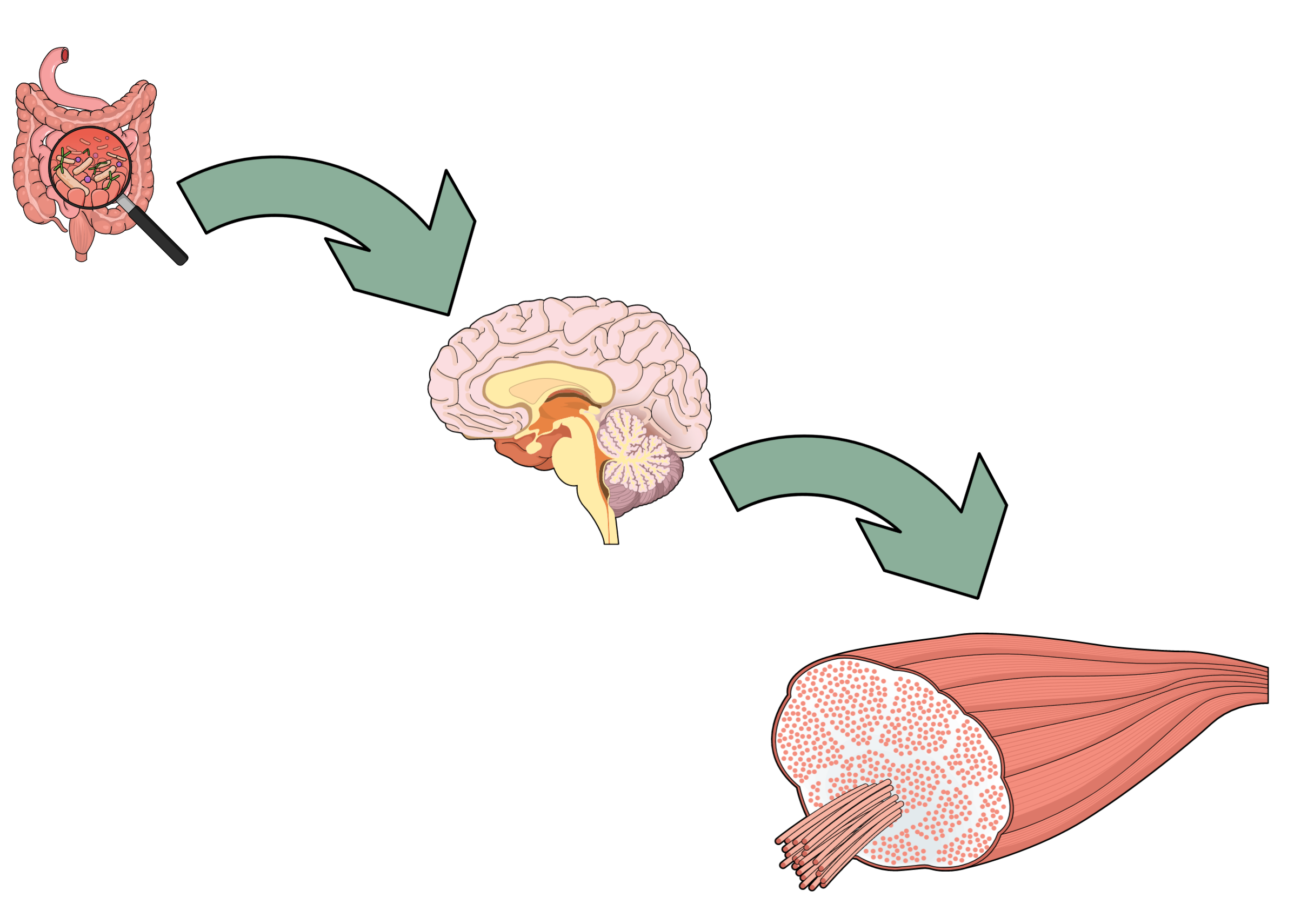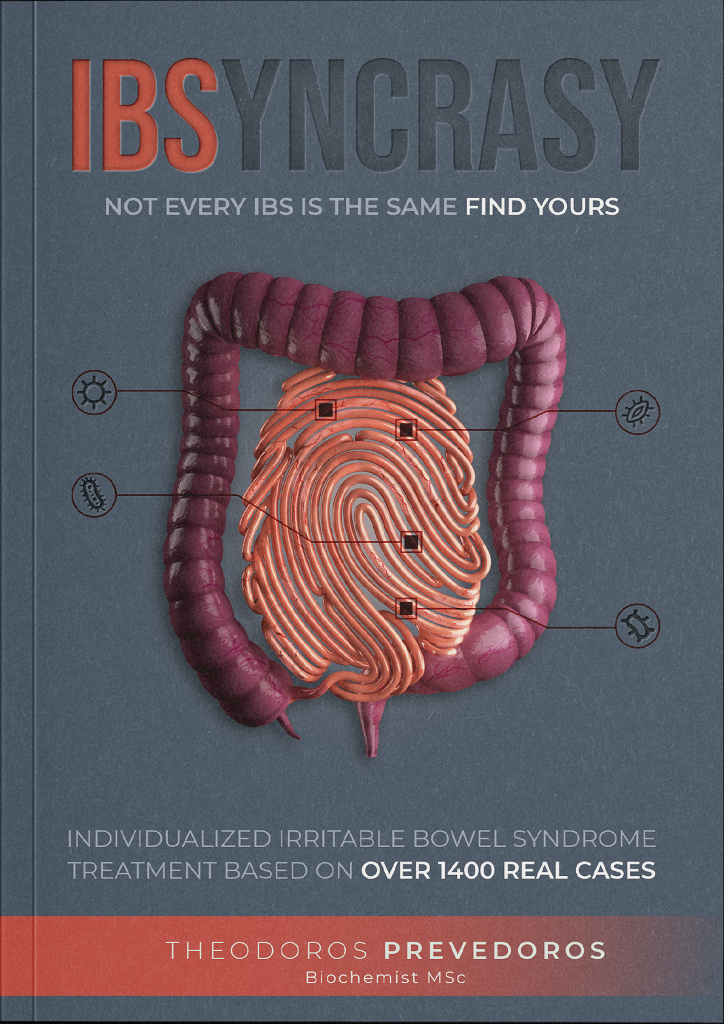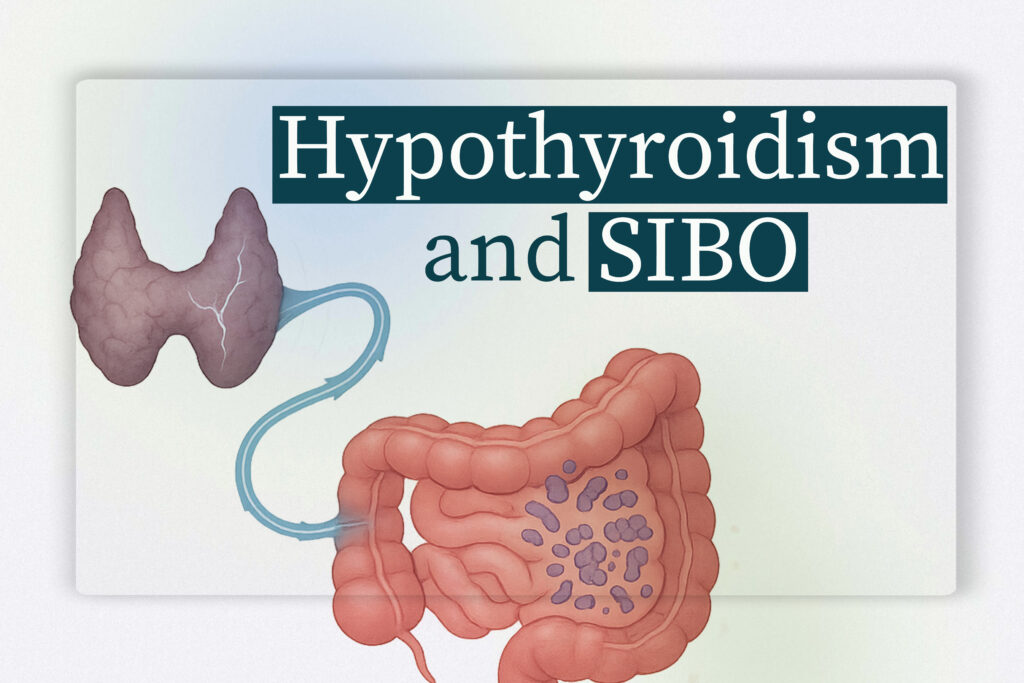Gut-brain axis and athletic performance
The gut-brain axis has become a fascinating area of research in recent years, and its role in physical exercise is becoming increasingly evident

The gut-brain axis and its role in health and bodily functions
The gut-brain axis is a complex communication network between the gut and the brain, which plays a crucial role in maintaining overall health and regulating various bodily functions. For example, it is responsible for managing digestion, metabolism, immune function, and even influencing mood and behavior. A healthy gut-brain axis is vital for athletes, as it can impact their performance, recovery, and overall well-being.
Physical and molecular interactions of the gut-brain axis
The gut-brain axis is composed of both physical and molecular components that work in harmony. The physical aspect of this connection is the network of nerves, such as the vagus nerve, that transmit signals between the gut and the brain. On a molecular level, this communication is facilitated by neurotransmitters, hormones, and postbiotics, which are produced by gut microbes and can influence various biological processes, including those related to exercise training and sports.
Exercise influence on human gut microbiota
Exercise may have a significant impact on the composition and function of the gut microbiota. Research has shown that even moderate exercise promotes a diverse and balanced gut microbiota, which is essential for optimal health. Exercise can also alter the gut microbial composition by increasing the abundance of beneficial bacteria, thus supporting immune function, reducing inflammation, and improving digestion and human health, in general.
Physical activity and gut microbes: Effects on athletic aerformance
The relationship between physical activity and gut microbes has far-reaching implications for sports performance.
Nutrient absorption and utilization: A healthy gut microbiome plays a vital role in the absorption and utilization of essential nutrients, such as amino acids, fatty acids, and vitamins, which are crucial for energy production, muscle synthesis, and recovery during exercise. For example, endurance athletes like marathon runners rely on efficient nutrient absorption to maintain energy levels throughout long races.
Recovery after training or injury: The gut microbiota can modulate inflammation through the production of anti-inflammatory molecules, such as butyrate and other SCFAs, which can help reduce muscle damage, support tissue repair, and speed up recovery after intense exercise or injury. This is particularly important for athletes who participate in high-impact sports, like basketball or soccer, where muscle strain and injury are common.
Focus ability: Some gut bacteria, like Lactobacillus and Bifidobacterium species, can produce neurotransmitters, such as serotonin and dopamine, which can influence cognitive function, focus, and decision-making during athletic activities. This is essential for sports like tennis or baseball, where focus and split-second decision-making are crucial for success.
Stress response: Exercise-induced stress can be mitigated by a balanced gut microbiota, which helps to regulate the stress hormone cortisol through the production of SCFAs and other bioactive molecules that can modulate the hypothalamic-pituitary-adrenal (HPA) axis. Exercise-induced stress behavior is an important factor for athletes in high-pressure situations, such as Olympic competitions or championship games.
Muscle conditioning: Certain gut bacteria can produce short-chain fatty acids (SCFAs), such as butyrate, which may help improve muscle conditioning and endurance by promoting mitochondrial biogenesis and enhancing fatty acid oxidation in muscle cells. This can benefit endurance athletes like cyclists or long-distance swimmers who require excellent muscle conditioning and adequate mitochondrial biogenesis to maintain peak performance.
Aerobic capacity: A diverse gut microbiota has been associated with improved aerobic capacity, which is essential for endurance athletes. This could be due to the production of metabolites like SCFAs that can influence energy metabolism, mitochondrial function, and oxygen utilization in muscle cells. This can be particularly advantageous for athletes participating in sports like triathlons or cross-country skiing.
Prebiotics and probiotics: Including prebiotics and probiotics in the diet can help enhance the gut microbiota by promoting the growth of beneficial bacteria, such as Lactobacillus and Bifidobacterium species, which can positively impact exercise performance through the production of bioactive molecules and metabolites. Athletes in all sports can benefit from a well-balanced gut microbiome to support overall performance and recovery.
Serotonin and mental resilience: Gut bacterial populations, such as some Lactobacillus and Bifidobacterium species, can influence serotonin production in the gut, which is crucial for mental resilience and stress management during competition. This is particularly important for athletes in high-pressure sports, like gymnastics or figure skating, where mental strength plays a significant role in performance.
Specific gut bacteria and oxygen utilization: Some research suggests that specific gut bacteria, such as Veillonella species, can improve oxygen utilization by metabolizing lactate, a byproduct of exercise, into propionate, which may contribute to enhanced endurance exercise performance by supporting energy metabolism and mitochondrial function. This can be beneficial for athletes who participate in sports that require high-intensity bursts of activity, such as sprinters or weightlifters, where efficient oxygen utilization is key for optimal performance.
Blood diversion: The gut microbiota can influence blood flow through the production of vasodilatory molecules, such as nitric oxide, which is essential for efficient nutrient and oxygen delivery to the muscles during exercise. A well-balanced gut microbiota may help optimize blood flow and oxygenation in active muscles, thus improving athletic performance. This is particularly important for athletes in sports like boxing or football, where maintaining stamina and strength throughout the game is essential for success.
Function | Mechanism | Sport |
|---|---|---|
Nutrient absorption and utilization | Efficient absorption of essential nutrients like amino acids, fatty acids, and vitamins | Marathon running |
Recovery after training or injury | Modulation of inflammation through anti-inflammatory molecules, such as butyrate and SCFAs | Basketball, soccer |
Focus ability | Production of neurotransmitters, such as serotonin and dopamine, by gut bacteria | Tennis, baseball |
Stress response | Regulation of stress hormone cortisol through SCFAs and bioactive molecules | Olympic competitions |
Muscle conditioning | SCFAs promoting mitochondrial biogenesis and enhancing fatty acid oxidation in muscle cells | Cycling, long-distance swimming |
Aerobic capacity | Diverse gut microbiota influencing energy metabolism, mitochondrial function, and oxygen utilization | Triathlons, cross-country skiing |
Prebiotics and probiotics | Enhancement of gut microbiota by promoting growth of beneficial bacteria | All sports |
Serotonin and mental resilience | Gut bacteria influencing serotonin production for mental resilience and stress management | Gymnastics, figure skating |
Oxygen utilization | Metabolizing lactate into propionate, supporting energy metabolism and mitochondrial function | Sprinters, weightlifters |
Blood diversion | Production of vasodilatory molecules, such as nitric oxide, for efficient nutrient and oxygen delivery | Boxing, football |
Actionable tips to improve the gut-brain axis and gut microbiome for optimal exercise performance
- Diversify and balance your diet: Aim to consume at least 5 servings of fruits and vegetables, 6-8 servings of whole grains, and 2-3 servings of lean proteins and healthy fats daily to promote diverse gut microbiota and support overall gut health.
- Incorporate prebiotic and probiotic foods: Consume 1-2 servings of prebiotic-rich foods (e.g., onions, garlic, and asparagus) and probiotic-rich foods (e.g., yogurt, kefir, and fermented vegetables) daily to enhance your gut microbiota.
- Maintain optimal hydration: Drink 16-24 ounces of water per hour of training, and replenish with electrolyte-rich beverages when necessary to support gut health and athletic performance.
- Practice stress management techniques: Dedicate at least 10 minutes daily to stress-reducing activities such as meditation, yoga, or mindfulness practices to foster a healthy gut-brain axis.
- Prioritize quality sleep: Aim for 7-9 hours of sleep per night to support gut health, overall well-being, and athletic performance.
- Limit antibiotic use: Use antibiotics only when necessary and according to your healthcare professional’s prescription to avoid disrupting the gut microbiota.

Hughes, Riley L. “A review of the role of the gut microbiome in personalized sports nutrition.” Frontiers in nutrition 6 (2020): 191.
Hughes, Riley L., and Hannah D. Holscher. “Fueling gut microbes: a review of the interaction between diet, exercise, and the gut microbiota in athletes.” Advances in Nutrition 12.6 (2021): 2190-2215.
Donati Zeppa, Sabrina, et al. “Mutual interactions among exercise, sport supplements and microbiota.” Nutrients 12.1 (2019): 17.
Wosinska, Laura, et al. “The potential impact of probiotics on the gut microbiome of athletes.” Nutrients 11.10 (2019): 2270.
Suryani, Dini, et al. “Type, intensity, and duration of exercise as regulator of gut microbiome profile.” Current Sports Medicine Reports 21.3 (2022): 84-91.
Mach, Núria, and Dolors Fuster-Botella. “Endurance exercise and gut microbiota: A review.” Journal of sport and health science 6.2 (2017): 179-197.
Marttinen, Maija, et al. “Gut microbiota, probiotics and physical performance in athletes and physically active individuals.” Nutrients 12.10 (2020): 2936.
Hsu, Yi-Ju, et al. “Kefir supplementation modifies gut microbiota composition, reduces physical fatigue, and improves exercise performance in mice.” Nutrients 10.7 (2018): 862.

With a background in Chemistry and Biochemistry from the National and Kapodistrian University of Athens, Theodoros brings a wealth of knowledge in functional medicine and advanced treatments to his role. He possesses exceptional skills in analysis, pattern recognition, diagnostic translation, and storytelling. He is also FMU certified in Functional Medicine and has received training in advanced treatments from the Saisei Mirai Clinic in Japan.


